Some worst practices which are likely to break QuickBooks on Windows/Mac!
 There are many causes of the problems which lay with end users or the system administrator in change of the QuickBooks deployment. Mentioned below are some common mistakes which can lead to major QuickBooks headaches. With all these common mistakes, you should be able to avoid the pitfalls and can enjoy the smooth experience with the most financial applications available.
There are many causes of the problems which lay with end users or the system administrator in change of the QuickBooks deployment. Mentioned below are some common mistakes which can lead to major QuickBooks headaches. With all these common mistakes, you should be able to avoid the pitfalls and can enjoy the smooth experience with the most financial applications available.
Keeping the app open
When you leave QuickBooks open anytime then it is a bad habit for a number of reasons. Moreover if your file is not password protected, then it leaves your data open. With this habit, it also leaves you to open data file corruption. There is no matter whether you have connection problems or some other issues, problems with the data file will appear. Moreover, if the database manager assumes that you are still connected, then you might be looking at a server reboot to solve the problem.
Not verifying or rebuilding your data file
You will find two tools using more often than you probably are. You will find verify and Rebuild within the utilities menu. You should run verify on your data file at least once a quarter. It will check whether there are any errors within the data. And if any errors are found, then you will need to run the rebuild tool to remove the errors. If you leave all those errors unchecked then they can compound to the point where the only solution is to send data file off.
Fail to upgrade QuickBooks
You will find several reasons to upgrade QuickBooks. There are many users who assumes the main reason to send intuit their memory. With each major release there are some new laws of tax and software fixes added. This will work when a major release of the hosting platform is put into play. Though upgrading QuickBooks can be very costly proposition, the downtime associated with not having a working QuickBooks solution. Therefore regularly upgrade QuickBooks.
Not doing clean installations
When you cover up with broken QuickBooks installation, then don’t just assume that windows can safely handle uninstall. This assumption will only cause subsequent installation to fail. After you uninstall, you must go through the directory structure and should delete all the left over files. But you should be careful while deleting and not to delete anything which is associated with QuickBooks POS. After doing an install, if you find your key and product code already there, then the installation is not clean.
 |
 |
 |
Hosting a data file on laptop
You should not host data file on laptop. There are several reasons but most common first, that laptop will most likely be moved off the premises. When such happen, QuickBooks cannot be used by other machines. Second, your most like will be transmitting your data over wireless. So don’t do that as wireless is less secure than a wired connection. QuickBooks has no business that run over a wireless connection.
Rebooting the server without warning QuickBooks users
Your server is having issues and decides the location is a reboot. You don’t have to bother to give heads up to all those QuickBooks users who happen to work seriously on the data file. At the time you reboot the server and break the connection, you have most likely corrupted that data file. Therefore if you want avoid such disaster, and then you all have to do is to alert each and every QuickBooks users that the server is going down and it need to be closed. After everyone has closed the QuickBooks, reboot it.
User Guide:
Step 1: Click on the ‘Select File’ button if you know the location of QuickBooks file or select ‘Search Files’ if you don’t know the location of file.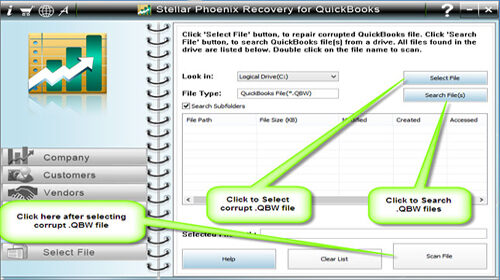
Step 2: Click the ‘Scan File’ button for scanning the selected file.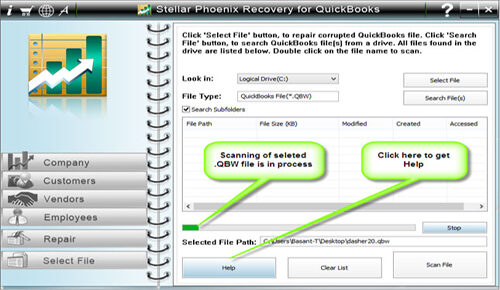
Step 3: To see the preview of scanned company information click on the ‘Company’ button.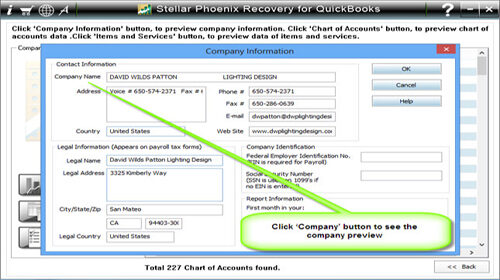
Step 4: By clicking on ‘Customer’ button, you can see the customer related information.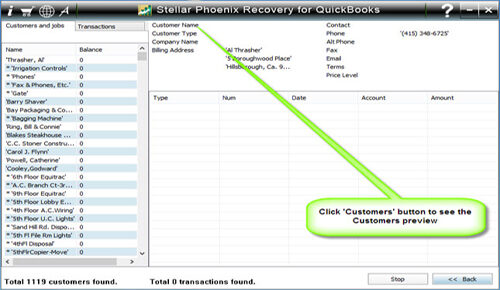
Step 5: If you want to see the information of vendors click on the ‘vendor’ button.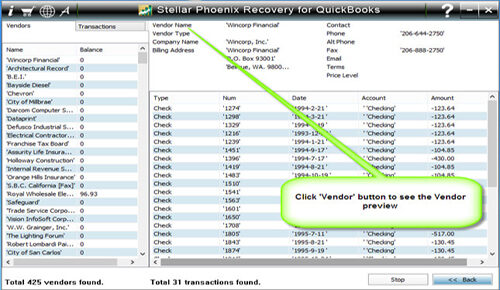
Step 6: For getting employees related information click on ‘Employees’ button.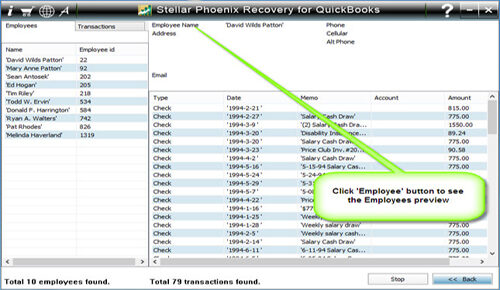
Step 7: Now click on the ‘Repair’ button, a ‘Save As’ dialog box will appear select version, path and then click on the ‘Start’ button.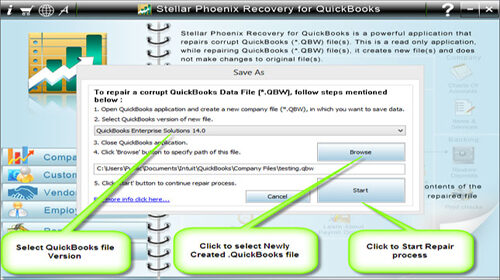
Step 8: If repair process is successfully completed then a message will appear as ‘repair process completed successfully’. Now click ‘OK’ and close the box and you are done.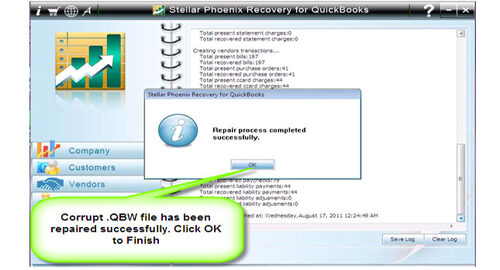
116 Total Views 1 Views Today
